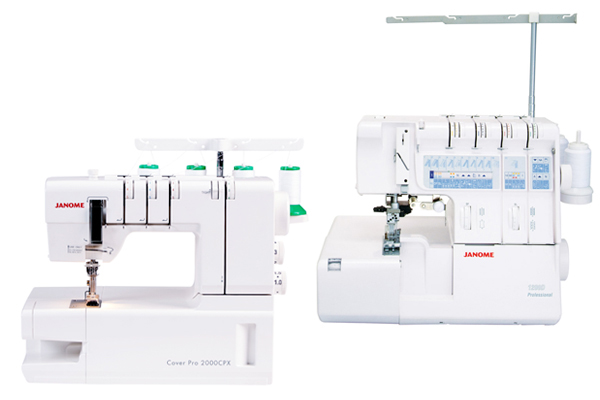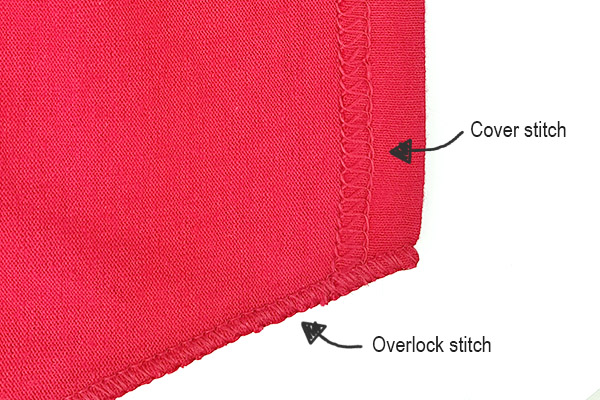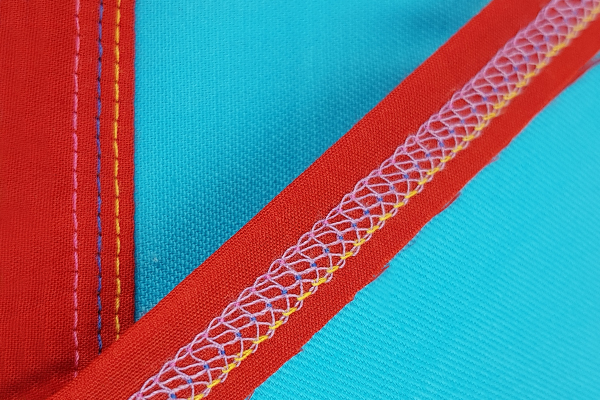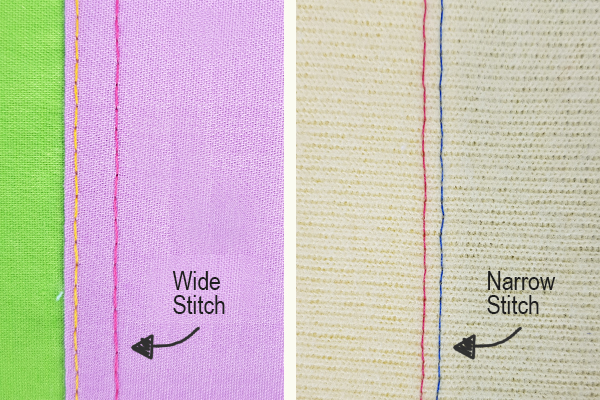Coverstitch Machine: A Beginner’s Guide
See that two rows of stitches on your T-shirt hem? They are not just for looks — but they do look kind of cool! – they allow the garment to stretch without breaking stitches.
Fancy meeting the machine behind these stitches?
Coverstitch machines are primarily used to create professional-looking hems to garments. It has the dual function of covering raw edges of a fabric and also retaining fabric stretchability. This is especially handy for people who like to make clothes from knit fabrics or require seams that retain stretch – think active wear, bathers, children’s clothing, etc.
You will commonly find coverstitch on sleeves hem, pants hem and necklines.
I already own an Overlocker, why do I need a Coverstitch machine?
Well, the short answer is they are really two different machines and do two different things altogether.

With overlockers, it’s main purpose is to tidy up seams and prevent fraying. Your overlocker will trim excess seam allowance and at the same time sew a run of neat stitches over the edge.
A coverstitch machine on the other hand, has a looper like an overlocker but doesn’t have a blade. Its job is simply to hem your finished garment edges or do decorative chainstitching.
Coverstitching works well on woven fabrics by keeping them from ravelling. They are especially useful for hemming knit fabrics. The stitch it makes maintains the stretch in the fabric and doesn’t pucker as is the case when you sew stretchy fabrics with a sewing machine.
How many needles do I need?
Janome coverstitch machines have the capability to sew with one, two or three needles, plus a looper underneath.
Used with just 1 needle, a coverstitch machine will knit a chainstitch, which is a beautiful stretchy seam.

Single needle coverstitch produces the straight line stitching seen on a garment’s outside and a braided chain stitch on the garment’s inside.
If three needles are used, then three lines of parallel stitching appears on the right side of the fabric.

A triple needle coverstitch offers both strength and stretch.
By far the most common arrangement is to use two needles to achieve a classic double needle coverstitch.

Typically, you’ll see two top threads on the right side of the fabric.
As there are three needle positions, you can either choose to remove the left or right needle for twin rows of stitches, which are fairly close together. The narrow coverstitch is ideal for lighter weight fabrics or when sewing smaller garments such as children’s clothing.
You can also choose to remove the central needle to create a wider set of stitches. This is the preferred setting for adult clothing and sturdier fabrics. But it really all depends on the final look you desire.

If you’re an avid dressmaker or already own an overlocker, a quality, stand-alone coverstitch machine such as the Janome CoverPro 3000 Professional will be an ideal addition to your lineup. This way you can have dedicated machines all set up and ready to do their jobs.
If you’re short on space, the Janome 1200D Professional combo coverstitch / overlock machine is our favourite option. You get two utility stitching functions in one compact machine!
Got a sewing question? Get help here or speak to your local Janome dealer.
Oops! We could not locate your form.
